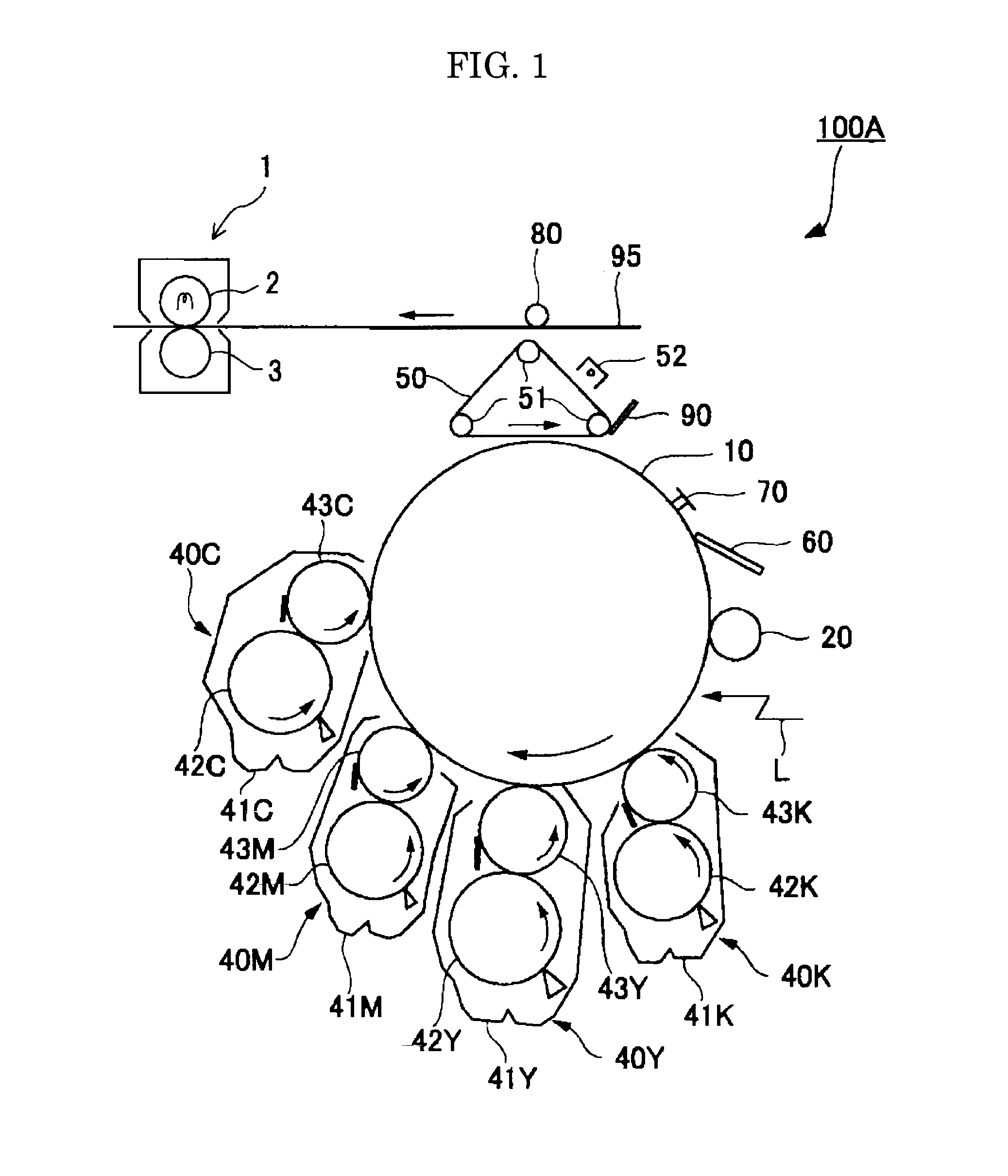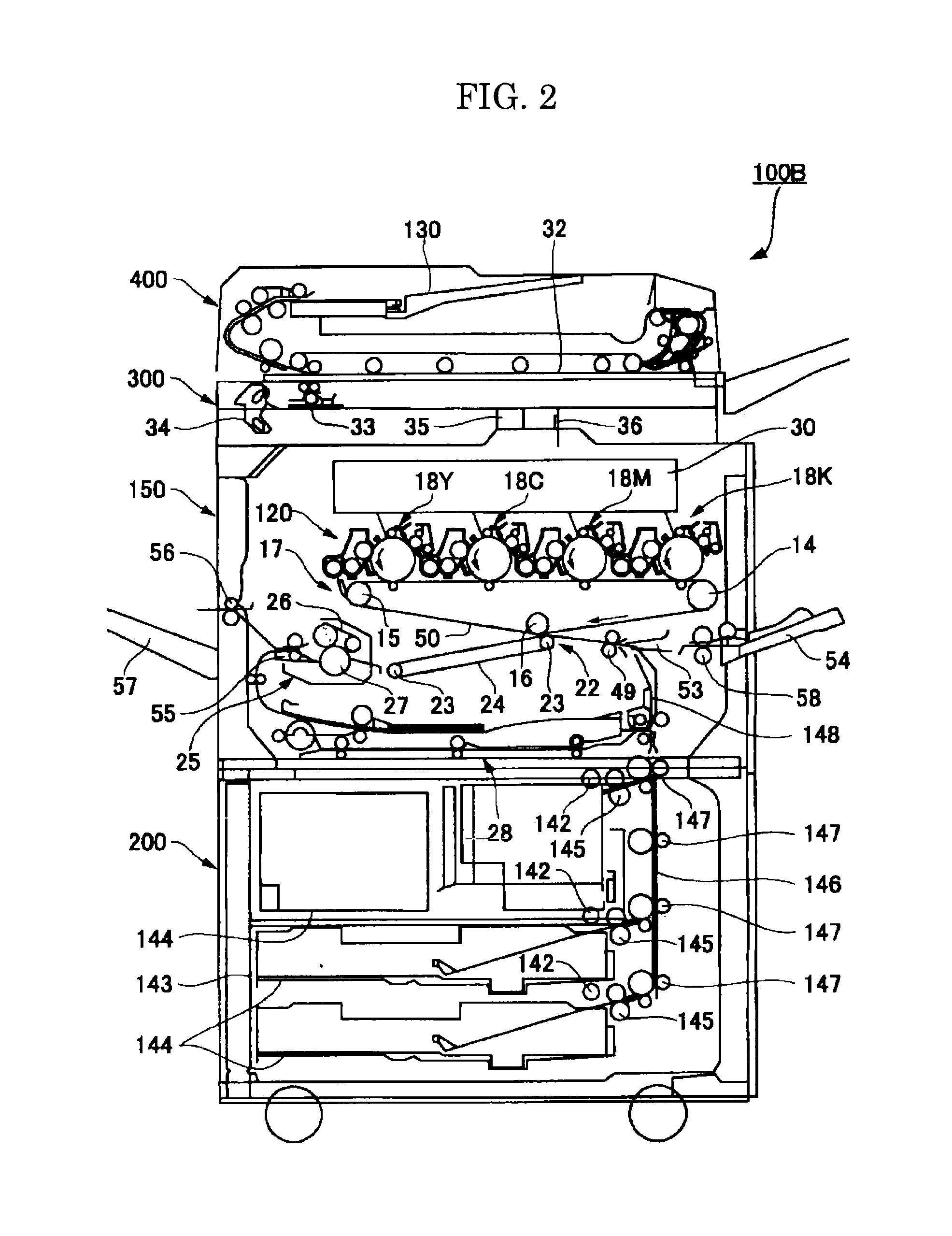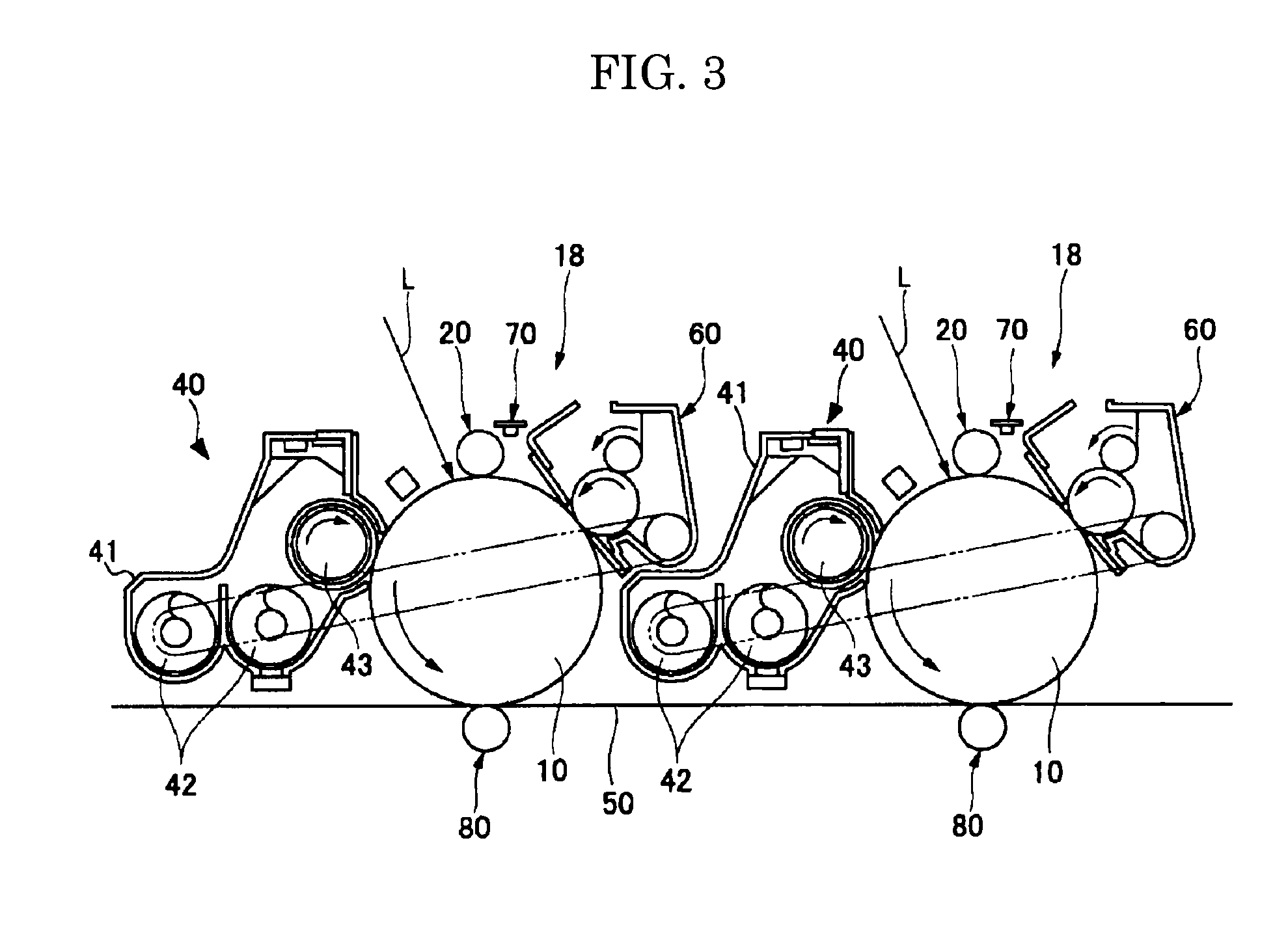Toner, developer, image forming method and image forming apparatus
- Summary
- Abstract
- Description
- Claims
- Application Information
AI Technical Summary
Benefits of technology
Problems solved by technology
Method used
Image
Examples
example 1
—Synthesis of Polyester Prepolymer—
[0142]A reaction container equipped with a condenser, a stirrer and a nitrogen-introducing pipe was charged with 682 parts of bisphenol A ethylene oxide 2 mole adduct, 81 parts of bisphenol A propylene oxide 2 mole adduct, 283 parts of terephthalic acid, 22 parts of trimellitic anhydride and 2 parts of dibutyl tin oxide. The resultant mixture was allowed to react under normal pressure at 230° C. for 8 hours and further react at a reduced pressure of 10 mmHg to 15 mmHg for 5 hours, to thereby produce Intermediate Polyester 1. The obtained Intermediate Polyester 1 had a number average molecular weight of 2,100, weight average molecular weight of 9,500, Tg of 55° C., acid value of 0.5 mgKOH / g and hydroxyl value of 51 mgKOH / g.
[0143]Next, a reaction container equipped with a condenser, a stirrer and a nitrogen-introducing pipe was charged with 410 parts of Intermediate Polyester 1, 89 parts of isophorone diisocyanate and 500 parts of ethyl acetate, foll...
example 2
[0164]A 2 L-metal container was charged with 100 g of Crystalline Polyester Resin 1 and 400 g of ethyl acetate, followed by heating at 70° C. for dissolution. Thereafter, the resultant mixture was quenched in an iced-water bath at the rate of 20° C. / min. After the resultant dispersion liquid was cooled, 100 g of Non-Crystalline Polyester Resin 1 was added thereto and made dissolved therein. Then, glass beads (3 mm in diameter) (500 mL) were added to the mixture to perform pulverization with a batch-type sand mill (manufactured by Kanpe Hapio Co., Ltd.) at the average fluid temperature of 25° C. or lower for 10 hours, to thereby produce Crystalline Polyester Dispersion Liquid 2.
[0165]Toner 2 was produced in the same manner as in Example 1, except that Crystalline Polyester Dispersion Liquid 2 was used instead of Crystalline Polyester Dispersion Liquid 1.
[0166]Next, the thermophysical properties of the toner was measured, and then endothermic values of the crystalline polyester resin ...
example 3
[0168]A 2 L-metal container was charged with 100 g of Crystalline Polyester Resin 1 and 400 g of ethyl acetate, followed by heating at 70° C. for dissolution. Thereafter, the resultant mixture was quenched in an iced-water bath at the rate of 20° C. / min. After the resultant dispersion liquid was cooled, 100 g of Non-Crystalline Polyester Resin 1 was added thereto and made dissolved therein. Then, glass beads (3 mm in diameter) (500 mL) were added to the mixture to perform pulverization with a batch-type sand mill (manufactured by Kanpe Hapio Co., Ltd.) at the average fluid temperature of 18° C. or lower for 24 hours, to thereby produce Crystalline Polyester Dispersion Liquid 3.
[0169]Toner 3 was produced in the same manner as in Example 1, except that Crystalline Polyester Dispersion Liquid 3 was used instead of Crystalline Polyester Dispersion Liquid 1.
[0170]Next, the thermophysical properties of the toner was measured, and then endothermic values of the crystalline polyester resin ...
PUM
| Property | Measurement | Unit |
|---|---|---|
| Particle diameter | aaaaa | aaaaa |
| Particle diameter | aaaaa | aaaaa |
| Particle diameter | aaaaa | aaaaa |
Abstract
Description
Claims
Application Information
 Login to View More
Login to View More - R&D
- Intellectual Property
- Life Sciences
- Materials
- Tech Scout
- Unparalleled Data Quality
- Higher Quality Content
- 60% Fewer Hallucinations
Browse by: Latest US Patents, China's latest patents, Technical Efficacy Thesaurus, Application Domain, Technology Topic, Popular Technical Reports.
© 2025 PatSnap. All rights reserved.Legal|Privacy policy|Modern Slavery Act Transparency Statement|Sitemap|About US| Contact US: help@patsnap.com



